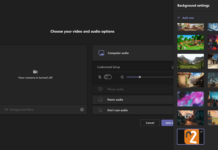The 7 Most Important Elements on Your Business Website
Have you ever wondered where your website visitors look first when they click on your home page? Two researchers at Missouri University of Science and Technology found the answer to this question by using eye-tracking software. According to the results of their study, it takes just 2.6 seconds from the time a page loads for a person’s eyes to focus on a specific element on it. From a design perspective, this means that whatever your visitors are looking at first better be good.
“We know first impressions are very important,” said Hong Sheng, an assistant professor of business and information technology at Missouri S&T. “As more people use the Internet to search for information, a user’s first impressions of a website can determine whether he or she forms a favorable or unfavorable view of that organization.”
Data from Web hosting platform Web.com backs up this claim: A recent survey found that 56 percent of consumers are more likely to make a purchase from a business if their website expectations are met.
Sheng and Sirjana Dahal, another researcher at Missouri S&T, used an infrared camera and eye-tracking software to monitor the eye movements of student participants as they scanned law-school websites. The researchers then analyzed the data to determine how long students focused on specific sections of a page, such as the menu, logo and main image, before they moved on to other sections.
The following website sections drew the most attention from the participants:
• Logo (6.48 seconds)
• Main navigation menu (6.44 seconds)
• Search box (6 seconds)
• Social media icons (5.95 seconds)
• Main image (5.94 seconds)
• Written content (5.59 seconds)
• Bottom of the website (5.25 seconds)
Experts from Web.com and website creation company Weebly shared a few website design tips for making the best first impression possible on your visitors:
Keep it simple
A well-laid-out, easy-to-navigate website will always be more effective than one that’s cluttered and overloaded with information. Dan Veltri, co-founder and chief product officer of Weebly, advised limiting your top-level navigation menu to five clearly labeled tabs with related pages organized under those.
“Five to 10 pages is sufficient for the majority of situations,” Veltri said. “Add site search to the top-right corner of your site so that visitors can quickly find what they are looking for. Use a few strategically placed, high-quality photos to give your site a professional look.”
Provide easy access to contact information
A good business website should drive calls and sales leads, but it can’t do that if your potential customers can’t reach you, said David Brown, CEO, chairman and president of Web.com.
“Your contact information should be visible, preferably at the top of the home page, so that visitors don’t have to search for a phone number or address if they want to contact the business,” Brown told Business News Daily.
Veltri agreed, noting that having a contact form accessible through the main navigation menu is the best strategy.
As the Missouri S&T study found, users spend time looking at both social media icons and the bottom of the website. Including your social links in the header and footer of your site will serve as both an attention grabber and a way to keep in touch.
Take advantage of SEO
A picture may be worth a thousand words, especially on a website. But that picture needs to be SEO-friendly in order for customers to find your business.
“SEO is another critical factor of website design,” Brown said. “Search engines will analyze your website from the top to bottom, left to right. Pictures will not be picked up by search engines, so be sure to include keywords that will enable your site to appear in results.”
Make it mobile-optimized
As consumers increasingly use smartphones and tablets to browse the Web, it’s more important than ever to make sure that your business website can smoothly transition from desktop to mobile views.
“Consumers already demand a desktop experience when browsing on a mobile device or tablet, and mobile-optimized websites will be the key ingredient to delivering on that demand,” Brown said. “Websites with limited content and clunky navigation will be quickly passed over for a site — and a business — that delivers a better experience.”
“Choose a website service that takes care of [mobile optimization] automatically for you so that you can focus on running your business,” Veltri added.
http://www.businessnewsdaily.com/2046-web-design-data.html











